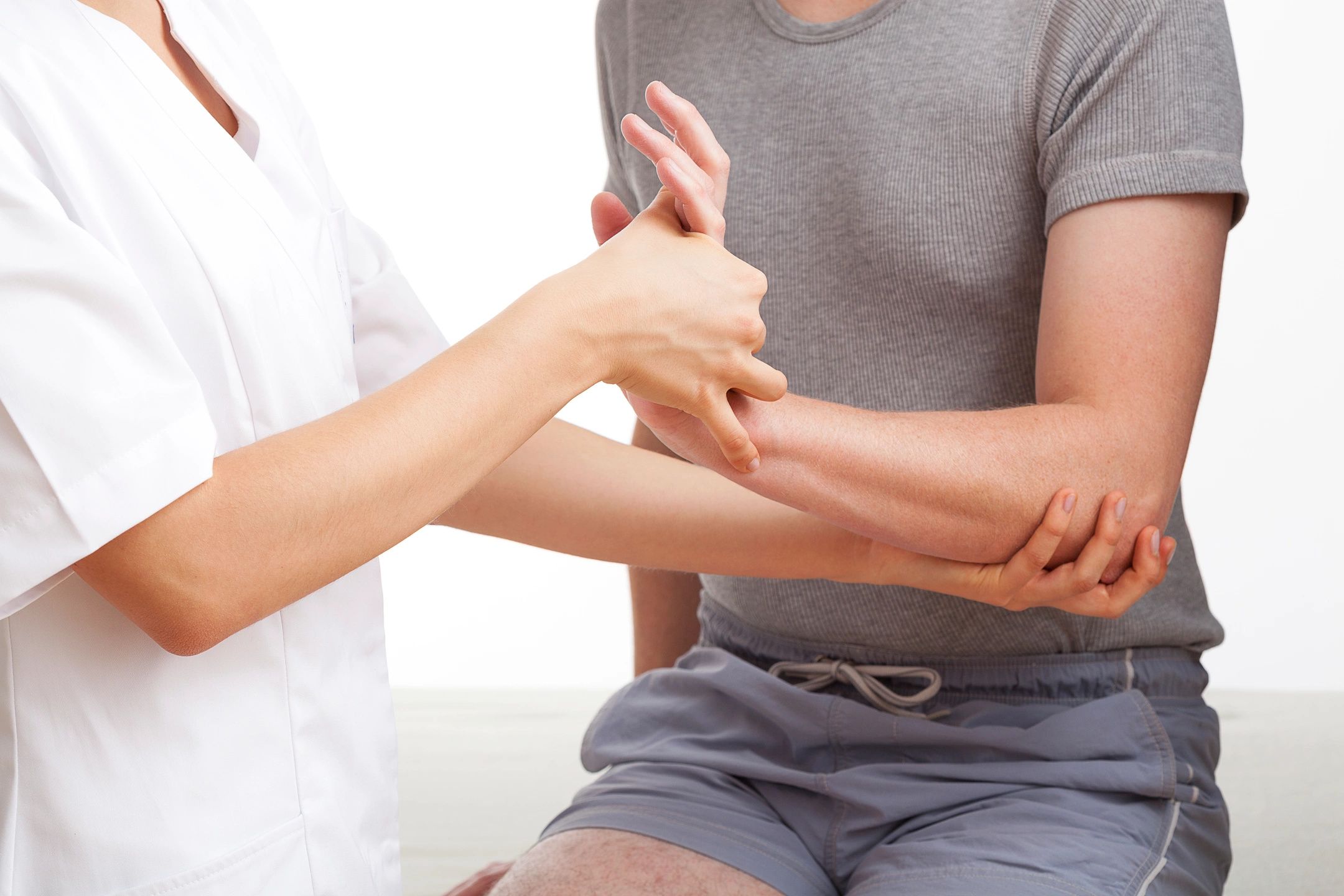
23 May Wrist Pain – Can Physical Therapy Help?
It’s only after you start experiencing wrist pain that you realize just how essential your wrists are to daily activities. Human beings do practically everything with their hands, and your wrists get your hands where they need to go and help your digits perform some of their most important functions. If you’re experiencing chronic wrist pain, you’re a prime candidate for physical therapy; find out exactly how a skilled physical therapist might be able to provide you relief from the wrist pain that threatens to take away your overall well-being.
What Are Some Common Types of Wrist Pain?
Wrist pain comes in a variety of forms. To adequately treat your pain, your physical therapist will need to discover the nature and the origin of your condition. Here are a few examples of the uncomfortable and painful wrist-related conditions that physical therapy may be able to alleviate:
1. Carpal Tunnel Syndrome
Carpal tunnel syndrome occurs when a nerve in your wrist becomes pinched. This condition derives its name from the part of your wrist called the carpal tunnel, which is on the palm side of your wrist.
2. De Quervain’s Tenosynovitis
This condition affects the mobility of your thumb, and the pain associated with de Quervain’s tenosynovitis occurs at the point where your thumb meets your wrist. The cause of this condition is usually a repetitive motion.
3. Ganglion Cysts
These types of cysts are most common in women between the ages of 15 and 45, but they also affect men. While ganglion cysts are usually benign, these sacs of fluid that appear on the backs of your wrists can impede your joint movement and cause pain.
4. Arthritis
Both rheumatoid arthritis and osteoarthritis can cause pain in your wrists. When you have arthritis, your joints become swollen and inflamed, and the resulting pain can occur all the time or only when you move the affected joint.
5. Fractures
It’s possible to fracture one or more of the dozens of bones in your hand or wrist without experiencing any immediate pain. Over time, however, undiagnosed fractures can cause serious chronic discomfort.
6. Tenosynovitis
Also called trigger finger, tenosynovitis causes one or more of your fingers or your thumb to become stuck in a bent position. This condition is sometimes accompanied by nodules on the affected tendon.
7. Tendinitis
Tendinitis (also spelled tendonitis) is a type of inflammation of the tendons. This condition usually occurs due to repetitive movements. Tendinitis isn’t limited to the wrists, but it can occur in any of the tendons throughout the wrist and hand area.
How Does a Physical Therapist Diagnose Wrist Pain?
When you visit a physical therapist to learn more about the pain you’re experiencing in your wrist, this medical professional will begin with a routine physical examination. Your physical therapist may then ask you to perform some range of motion (ROM) exercises to determine how much you can move the affected joint. If your physical therapist isn’t confident that he or she can accurately determine your condition with these basic diagnostic criteria, imaging tests, such as MRIs or CAT scans, may be ordered.
Physical Therapy Exercises for Wrist Pain
After your physical therapist diagnoses your condition and develops a treatment regimen that will address your specific circumstances, this medical professional may suggest you try a few exercises at home. Here are some examples of simple physical therapy exercises you can use to improve your hand and wrist strength or relieve pain in your joints, tendons, or ligaments:
1. Extension and Flexion
This exercise may help alleviate the symptoms of carpal tunnel or arthritis. To enjoy the benefits of wrist extension and flexion in your wrist, arrange your hand palm-down with a towel or similar padded object under your wrist. Then, lift your hand at the wrist until you feel a gentle stretch. Slowly return your wrist to its original position, and then bend it downward. Repeat this exercise 10 times or as needed.
2. Supination and Pronation
While standing or sitting, hold your arm at your side with your elbow bent at 90 degrees and your hand facing forward. Slowly turn your wrist as far as it can comfortably go, then return to the starting position. Bend your wrist the other way next, and repeat this exercise 10 times or as needed.
3. Ulnar/Radial Deviation
With your wrist supported on a table with a soft object, arrange your hand vertically so your pinky is at the bottom and your thumb is on top. As if you’re slowly waving to someone, raise your hand at the wrist and carefully lower it to the starting position. Next, push your hand downward at the wrist, and repeat this exercise 10 times or as needed.
4. Tendon Glide
Start with your hand flat and your fingers extended. Make a hook fist (also called a lion’s paw) and then extend your hand flat again. Next, make a full fist and then return to a flat hand, and lastly, make a straight fist and return to a flat hand. Repeat 10 times or as needed.
5. Thumb Flexion and Extension
This exercise is especially helpful for de Quervain’s tenosynovitis. Start with your thumb positioned outward, and slowly fold it over the palm of your hand. Hold, and then release. Repeat 10 times or as needed.
6. Fist Clenching
Put your hand on your thigh with the palm up. Slowly make a fist. Without moving your elbow, bend your wrist so your fist moves toward your body. Hold, release, and repeat 10 times or as needed.
7. Tennis Ball Squeezing
This exercise also works with a stress relief tool. Squeeze your tennis ball or tool with all your fingers and your thumb, and release. Repeat 10 times or as needed.




Sorry, the comment form is closed at this time.